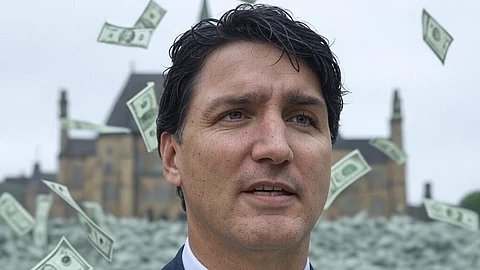

Over the last 10 years, the Government of Canada has spent around $11.2 billion on overseas gender initiatives, focusing on projects directly targeting gender equality and women’s empowerment as outlined in Canada’s Feminist International Assistance Policy (FIAP).
The figure is a conservative estimate, as it primarily includes gender-targeted aid and doesn’t account for the full value of gender-integrated projects, which could add billions more if fully calculated.
Trudeau announced FIAP in the House of Commons in 2017, emphasizing Canada’s commitment to gender equality.
"We are here today to launch Canada’s Feminist International Assistance Policy — a policy that puts women and girls at the centre of everything we do in international assistance. Because we know that when women and girls thrive, everyone benefits," he said.
Trudeau promised to balance the budget by 2019 during the 2015 election, but instead ran nine consecutive deficits.
The largest was in 2023/24, with a deficit of $61.9 billion, the highest outside the COVID-19 period. Annual deficits averaged around $39–48 billion from 2020–2025, driven by pandemic spending, infrastructure, and social programs.
Federal debt doubled from $693.8 billion in 2015 to an estimated $1.4 trillion by March 2025 — according to the Fraser Institute.
Per-person debt rose by $14,127 (inflation-adjusted) from 2014/15 to 2023/24, with debt servicing costs hitting $53.7 billion in 2024/25, or $1,301 per person — more than federal GST revenue.
Pre-COVID deficits were smaller — $18.1 billion in 2018/19 — but pandemic spending (2020–2022) and ongoing spending in health, climate, and Indigenous reconciliation pushed debt higher.
Critics, like the Fraser Institute, argue much of the spending was wasteful, while Trudeau’s government framed it as necessary for economic recovery and social equity.
